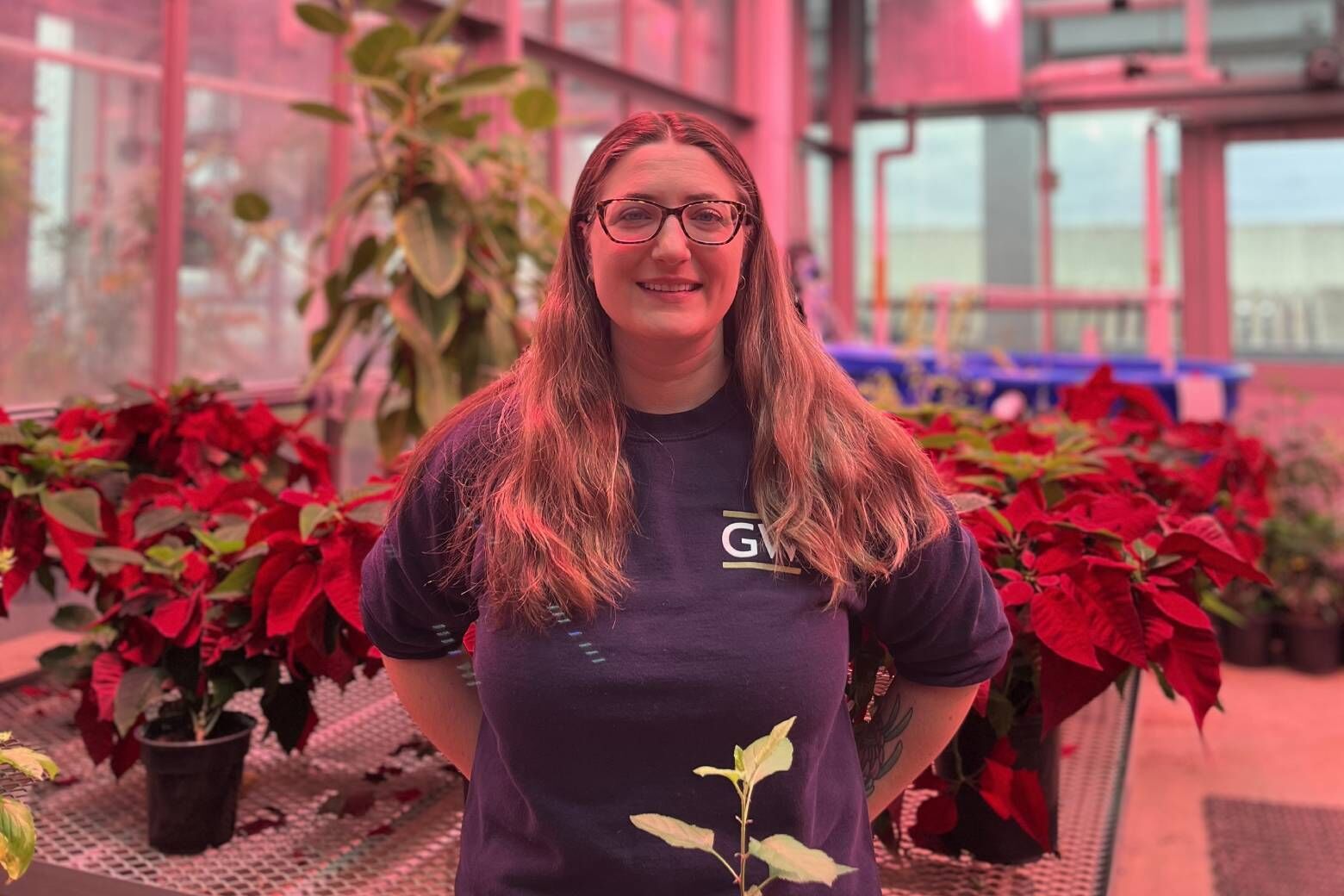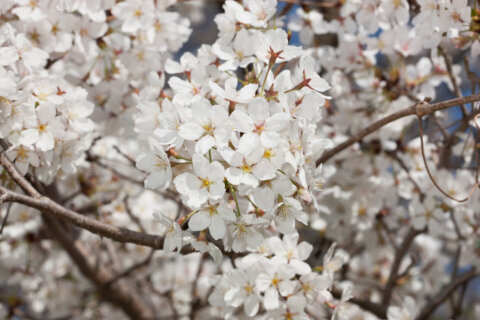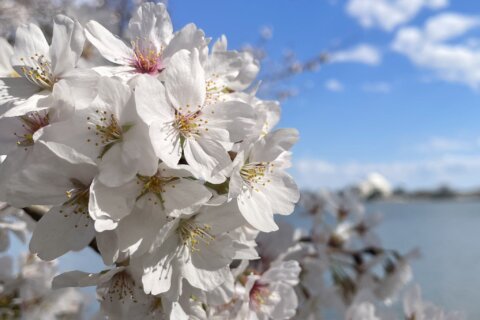This video is no longer available.
Crowds admiring the District’s cherry trees are actually seeing a variety of blossoms, and the 12 different varieties range from Akebono to Yoshino.
The majority of the trees that visitors to the Tidal Basin see are Yoshino trees, said Rachel Canalichio, greenhouse manager at George Washington University.
“These are all just cultivars, they’re all the same species, but they’ve been bred to have very distinct growth habits or very distinctive blooms from each other,” said Canalichio, who also teaches plant science and horticulture at the university.
Yoshino is the one that rings the Tidal Basin and when in peak bloom, they give an illusion of a snowy cloud ringing the area.
“They’re just staggering” in their beauty, Canalichio told WTOP.
Another cultivar is the Kwanzan cherry tree, most are located in East Potomac Park, according to the National Park Service website.
Kwanzan often bloom around two weeks later than the Yoshinos, according to Canalichio. Their deep pink blossoms look a bit like tiny pom-poms.
Also dotting the park, the weeping cherry tree.

“That’s a very specific cultivar too that blooms around the same time as the Yoshino and tends to have like, a double row of pink petals,” said Canalichio.
There are a few of the original cherry trees given as a gift to the U.S. by Japan, and Canalichio calls those “living relics.”
In nature, the trees live for decades, but Canalichio said having some reach the 100-year mark or beyond simply wouldn’t happen without constant care.
“‘It’s really only because of the Park Service, who completely pampers and babies these trees” that they continue to produce blossoms reliably year after year, she said.
There are stressors affecting the trees, said Canalichio, including climate change and the urban environment.
And of course, the millions of visitors to D.C. each year have an impact as well.
One issue, said Canalichio, is soil compaction. That’s the pressure that the roots are under from the intense foot traffic especially along the Tidal Basin. All of those footsteps over time, said Canalichio, “which really affects the quality of the soil because we’re tamping down all of the oxygen that’s in the soil that the trees really need to survive.”
Another issue, is of course, the number of visitors who can’t resist leaning on, or even perching on the branches of the cherry trees.
“Of course, visitors want to take pictures of the trees, they want to climb up into the branches and get their perfect selfie, which I completely understand,” she said. “It really affects the health of the trees.”
She urged people to get their photos from a distance to preserve the health of the trees that are so beloved.
In recent years, the National Park Service started a campaign called “Cherry Blossom Protectors” urging people to stay on the sidewalks, avoid walking over the roots of the trees and refrain from snapping off blossoms as souvenirs.
Get breaking news and daily headlines delivered to your email inbox by signing up here.
© 2024 WTOP. All Rights Reserved. This website is not intended for users located within the European Economic Area.








